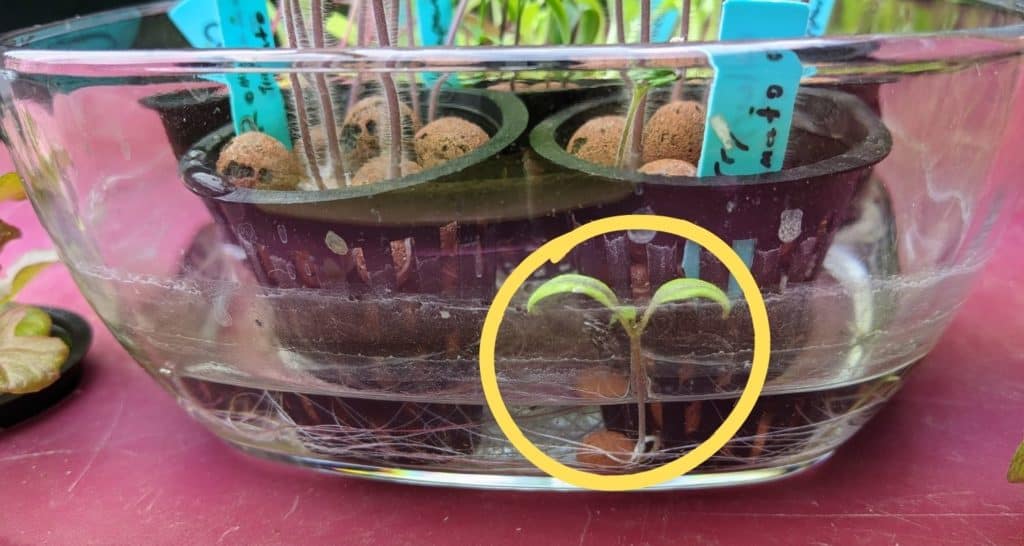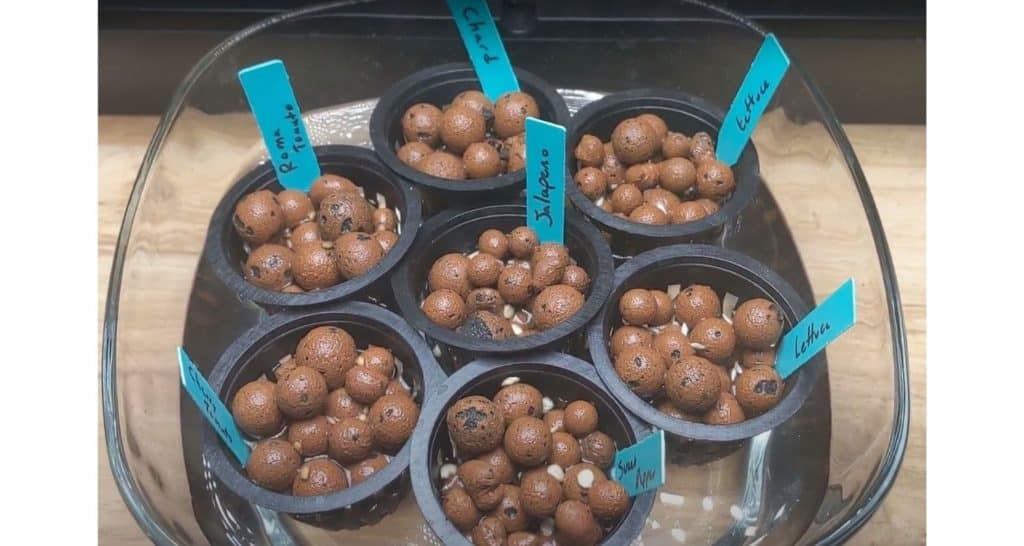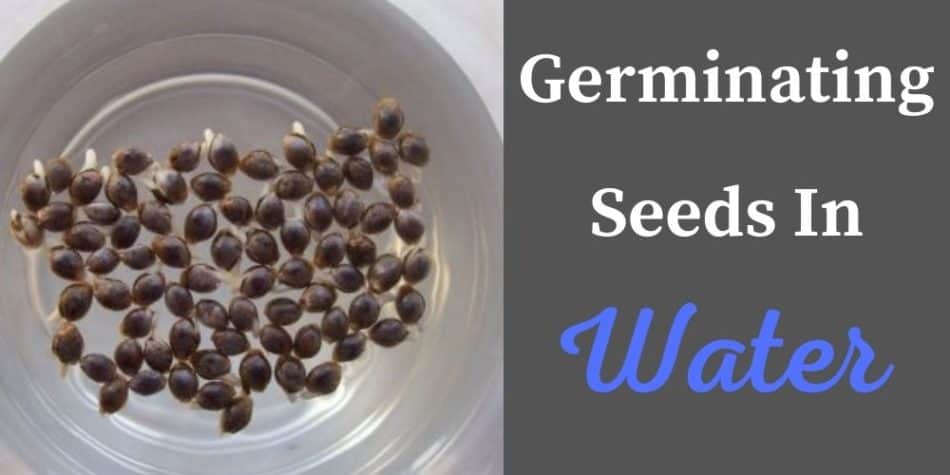Starting seeds is a great way to grow new plants at anytime of the year. Starting plants from seeds is also more cost efficient than buying seedlings each season for your garden.
So which method is best for germinating seeds? After all you can start plants in so many ways that it can almost be overwhelming.
Let’s start seeds the cheapest and simplest way possible – in water.
Germinating seeds in water is a great way to start growing plants. Simply fill up a cup with tap water and allow it to reach room temperature. Next place the seeds into the cup and wait 24 to 72 hours. The cup does not need to be placed in sunlight although warmth does help the seeds germinate. After 24 to 72 hours, the seeds will sprout tails which means they are ready to be planted.
This is the method I have used to germinate all of my seeds, whether it’s lettuce, tomatoes, peppers, and even herbs.
Here’s a video where I start seeds in water and use a growing medium (hydroton) to allow the plants to continue to grow hydroponically:
Tomato Seeds Started In Just Water (Photo Evidence)
Below you can see that I was able to germinate a lot of plants in water. I have been starting seeds for my hydroponic system using only hydroton and water.
One of the seeds slipped through the net cup which is why there is a plant growing directly in the water. So you can see that a seed was able to germinate into a seedling in water.

Normally a seedling that sprouted in just water will grow until the seed is fully consumed. Afterwards, the plant will need nutrients to continue to grow. Usually plants get nutrients from the soil or water soluble nutrients.
If the plant continues to just grow in water without any nutrients then the plant can get sick and eventually die.
The seedling in the photo is growing healthy and strong since I added nutrients to the water after the seeds germinated. This will allow me to transplant these seedlings into my hydroponic system.
You can learn more about growing plants in water and without soil in this Beginner’s Guide to Hydroponics.
How Does Starting Seeds In Water Work?
Starting seeds is a fascinating and simple concept.
The seeds are hibernating when they are placed in a cool dry location which means you can store seeds for years before starting new plants.
Adding water to seeds “wakes up” the plant to start growing. So placing a seed in a cup full of water will encourage the seed to germinate.
Once the seeds “wake up” and the tails sprout then the seeds are ready to be planted.
So why do people start seeds any other way if placing seed in water is so simple and effective?
Downside To Germinating Seeds Directly In Water
Much like everything else, there are pros and cons to starting seeds directly in water.
The downside to this method is moving or transplanting the seed after the 24 to 72 hours is risky. The sprouted tail is very fragile so it can be easy to damage or break off the root.
Moreover, planting a tiny seed with a sprouted tail is also a delicate procedure. You only want to bury the seed about 1/2 inch from the surface. Place the seed so the sprouted root is pointed towards the bottom and cover the seed gently with loose soil.
The risk of damaging the tiny seed can be reduced by giving the plant more time to get stronger before moving it.
You cannot give the plant too much time in just water since it will need nutrients to continue growing after it grows out of its seed.
Starting Seeds In Water With A Growing Medium
My preferred method for starting seeds is placing hydroton into a net cup and dropping seeds directly into the cup. I place these cups into a larger water reservoir.
The brown balls in the photo (hydroton) are my growing medium which helps germinate the seeds.

In my photo, the hydroton is doing 2 important things:
- Pulling the water up from the container through capillary action which keeps the seeds moist
- Acts as a “soil” so that the plants roots have something to grab onto which allows the plant to grow upright
Since the hydroton will give the plant’s roots something to hold onto, I am now able to give my plants weeks or even months before I transplant them.
Keep in mind, I do need to add water soluble nutrients once the seeds turn into seedlings. Hydroton does not provide any nutrients. Hydroton, also known as Lightweight Expanded Clay Aggregate (LECA), is only a growing medium.
Downside To Germinating Seeds In Water With Growing Medium?
There is no downside to germinating seeds in water with a growing medium. We saw that the only downside to starting seeds with just water is that transplanting the tiny seeds can be risky.
Allowing the seeds to turn into healthy seedlings means transplanting becomes less risky.
So the only potential downside to germinating seeds in water with a growing medium is having to provide water soluble nutrients. Thankfully there are a lot of options for hydroponic nutrients at garden centers and even on Amazon.
My personal recommendation for hydroponic nutrients is the Flora Series by General Hydroponics since it comes in 3 parts. This allows you to adjust the different nutrients you provide your plants. For seedlings just use 1/4 of the recommended dose.
Conclusion
Growing plants from seeds is an effective and cost efficient way to continue growing a garden for years to come. Starting seeds can be as simple as burying a seed in the ground or dropping a seed in a cup of water.
There are lots of ways to grow plants regardless of the weather outside. No matter how you end up starting your seeds, I hope that you are more confident in getting your thumb a little greener.

